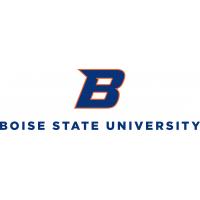Plant communities are composed of complex phenotypes that not only differ among taxonomic groups and habitats but also change over time within a species. Restoration projects (e.g., translocations, reseeding) can introduce new functional variation in plants, which further diversifies phenotypes and complicates our ability to identify locally adaptive phenotypes for future restoration. Near-infrared spectroscopy (NIRS) offers one approach to detect the chemical phenotypes that differentiate plant species, populations, and phenological states of individual plants over time. We used sagebrush (Artemisia spp.) as a case study to test the accuracy by which NIRS can classify variation within taxonomy and phenology of a plant that is extensively managed and restored. Our results demonstrated that NIRS can accurately classify species of sagebrush within a study site (75-96%), populations of sagebrush within a subspecies (99%), annual phenology within a population (>99%), and seasonal phenology within individual plants (>97%). Low classification accuracy by NIRS in some sites may reflect heterogeneity associated with natural hybridization, translocation of non-local seed sources from past restoration, or complex gene-by-environment (GxE) interactions. Advances in our ability to detect and interpret spectral signals from plants may improve both the selection of seed sources for targeted conservation and the capacity to monitor long-term changes in vegetation.
Data and Resources
| Field | Value |
|---|---|
| Modified | 2022-10-06 |
| Release Date | 2021-10-28 |
| Publisher | |
| Identifier | 43515052-c037-422c-9282-f67c3c6a821e |
| Spatial / Geographical Coverage Area | POINT (-113.289869 44.699597) POINT (-114.317528 43.242182) POINT (-113.4 42.15) POINT (-113.383333 42.95) POLYGON ((-114.57313299179 42.021815832489, -114.57313299179 44.900738456164, -112.88635879755 44.900738456164, -112.88635879755 42.021815832489)) |
| Spatial / Geographical Coverage Location | Idaho USA |
| Temporal Coverage | Tuesday, January 1, 2013 - 00:00 to Thursday, December 31, 2015 - 00:00 |
| Language | English (United States) |
| License | |
| Author | |
| Contact Name | Jennifer Forbey |
| Contact Email | |
| Public Access Level | Public |
| DOI | 10.7923/e0ca-6g41 |


![[Open Data]](https://assets.okfn.org/images/ok_buttons/od_80x15_blue.png)